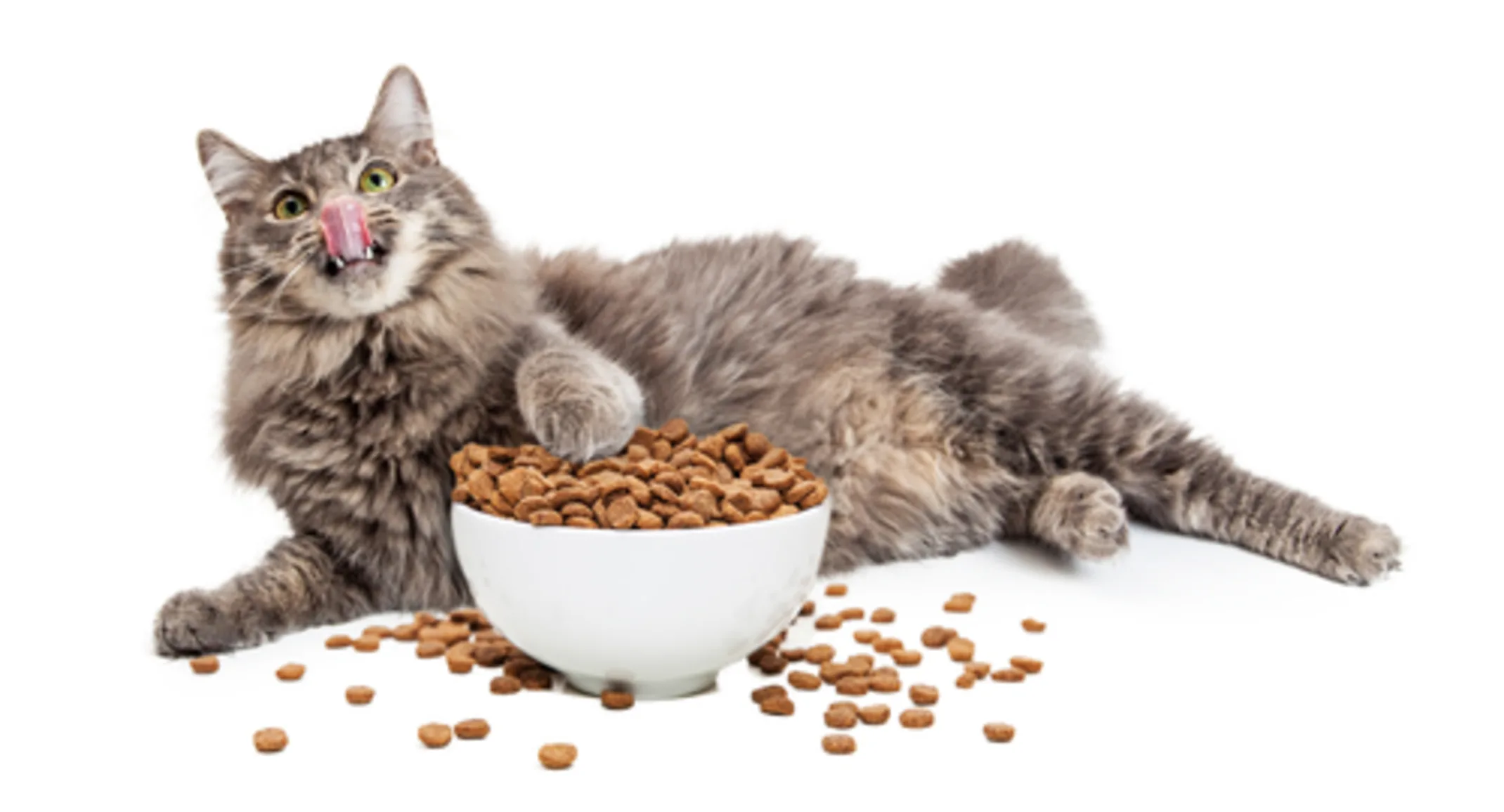Overweight or Obese Cats and the Risks to their Health
Cats

Videos and memes of fat cats might occasionally “break the internet,” but the truth is that there’s nothing very cute or funny about obesity in your beloved household pets.
While an older cat’s pudgy belly may not seem like a big deal, those extra pounds can lead to some very serious health complications, both in the short and long term. We’re not saying the overweight cats you see on Instagram and YouTube aren’t loveable—we’re just saying they’re not healthy. The sad truth is, they’re suffering in many ways, and it’s up to their owners to get them the help they need beyond a bunch of “likes” on social media.
While in the moment it may not seem like it, even a little regular overfeeding of your pet adds up over time, and a bit of excess weight can become a big problem. It’s becoming more and more common—back in 2011, the Association for Pet Obesity Prevention (APOP) did a study and found that more than half of all cats in the U.S. are overweight or obese. That’s right—there are more overweight cats in America than there are cats that are at a healthy weight. That means that veterinarians across the country are seeing more and more cases of weight-related problems. Anyone who owns an animal knows that veterinary visits can be stressful on our feline friends, but it’s important to make sure they stay at a healthy weight and away from health problems.
The good news is that obesity is relatively easy to prevent and also to treat, so it’s pretty simple to help your cats stay as happy and healthy as they can be. To fully understand cat obesity, however, it’s good to know how it starts.
The causes of obesity in cats are similar to those in other mammals like dogs, horses, and humans; usually, it’s an imbalance of caloric intake and activity level. In other words, most creatures put on weight when they eat more calories than they’re able to burn as energy. Now, there can be contributing factors—for example, neutered and spayed animals have a tougher time keeping off excess weight, as their metabolism slows down post-procedure. Animals that require medication may need more help with portion control and activity level, and isolated animals are usually heavier than highly social ones. The same goes for stressed animals. They may eat more, just like humans do. Additionally, just like humans, the older a cat gets, the less active it becomes, and its metabolism slows down as well.
How do you know if your cat has become overweight or obese?
In cats, obesity is determined by several methods, such as the obvious—measuring a cat’s weight—and assessing its body condition by looking at its composition. If you’re unsure if your cat is overweight or obese, call your local Cherry Hill veterinarian. Some fluffier cats can look overweight when they’re not, and some larger cats may not look like they’re carrying excess weight when they are. That’s why it’s important, before starting any diet, to make sure you consult with your cat’s veterinarian.
Cat obesity is important to address, and quickly, as it is associated with real risks. Obese cats are at a greater risk for many diseases like diabetes, liver disease, arthritis, urinary problems, lameness, pancreatitis and GI diseases of all types, and skin problems such as dandruff. Fat cats also experience a decreased quality of life and even an increased possibility of cancer.
The best way to treat obesity in pets is to prevent it from the beginning. It may be fun to feed your cat treats or table scraps, but it’s best to limit treats and also confine your cat’s diet to cat food, and in the portions recommended on the back of the bag. When feeding cats dry food, don’t free feed, leaving your cat to decide how much to eat and when. Indoor animals in particular can become bored and snack as a way to cope. Instead, be sure to use a measuring cup to help ensure portion control. With wet food, your strategy should depend on the food itself. If you’re feeding your cat a stew-like food, measure it out by weight into your cat’s bowl with a kitchen scale, and with a wet food use a butter knife to mark portions before you scoop.
It’s also a good idea to look at the ingredients in your cat’s diet. Cats are carnivores, meaning meat is hugely important to their diets. Your housecat may enjoy bread, vegetables, or other snacks, but in the wild their diet would be primarily protein: rodents, birds, bugs. A high-quality food for cats will have meat as its primary ingredient. There are so many brands out there these days that make a lot of different claims. Talk to your Cherry Hill veterinarian for advice on your pet’s particular needs based on age, lifestyle, and health
Cherry Hill Animal Hospital offers dietary counseling and weight management services to help cat owners keep their cats at a healthy weight.
It’s best to make an appointment before making any radical changes to your cat’s diet. Your veterinarian will help you discuss your cat’s needs from a dietary standpoint, and help you understand the most important parts of your cat’s diet. But, as with any weight loss program, slow and steady wins the race. Dramatically reducing your cat’s diet can lead to unintended consequences in the form of other illnesses. It’s best to gradually reduce your pet’s intake, and manage your expectations.
It can take up to a year to safely see the results you want when it’s time to introduce weight management into your cat’s life. But it’s best to forge ahead and then stick with those healthy changes. While in the short term your cat may miss table scraps and a full food dish, in the long term it will be much better off spending longer, healthier years with you. An agile, active cat is a happy cat!
If you’re looking for a Cherry Hill veterinarian in Camden County, consider Cherry Hill Animal Hospital. We are a Fear Free-certified clinic and would love to discuss your cat’s health and well-being, including any weight issues, with you. Phone (856) 325-2100 for veterinary care in Cherry Hill.
